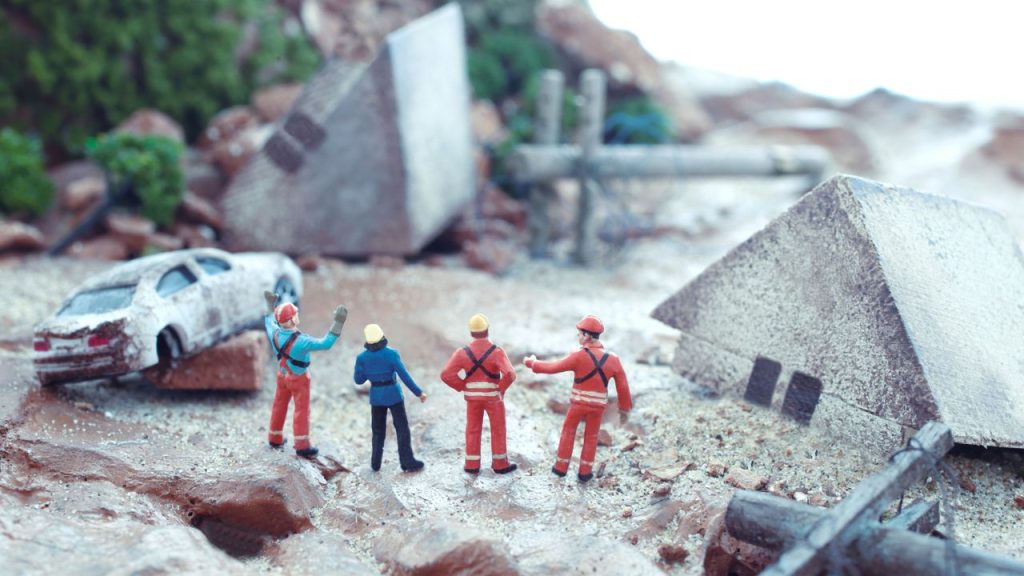The Disinformation Disaster: How Fake News Compounds Tragedy in Japan
The devastating Noto Peninsula earthquake on New Year’s Day 2024, like many disasters before it, exposed a chilling secondary calamity: the rapid spread of disinformation. Beyond the tremors and structural damage, a wave of false reports, AI-generated images, and malicious rumors inundated social media, hindering rescue efforts and exacerbating the trauma experienced by victims. Hori Jun, a former NHK announcer and seasoned disaster reporter, explores this growing phenomenon in his book, “Saigai to dema (Disaster and Disinformation),” providing a crucial analysis of how fake news becomes a destructive force in times of crisis.
The Noto earthquake offered a stark example of disinformation’s real-world consequences. A fabricated plea for help, posted by a man seeking online notoriety, led emergency responders on a fruitless search, diverting vital resources. This incident highlighted the rise of “impression zombies,” social media users who exploit tragic events by posting nonsensical or misleading content to gain visibility and advertising revenue. Hori condemns this behavior, emphasizing the reprehensible nature of profiting from others’ suffering. The incident underscores the need for swift action against those who deliberately obstruct aid and amplify anxiety during emergencies.
The 2016 Kumamoto earthquakes provide another case study in the speed and impact of disinformation. A fake image of a lion supposedly escaped from the Kumamoto City Zoo went viral within minutes, adding to the widespread panic. Despite the zoo’s efforts to debunk the rumor, the misinformation spread rapidly, hindering evacuation efforts and causing unnecessary fear. This incident, which resulted in the first arrest for spreading fake disaster information in Japan, demonstrates how easily fabricated content can escalate into a public safety issue. While the charges were later dropped, the event served as a wake-up call to the potential repercussions of online misinformation.
The advent of readily available AI technology has further amplified the threat. Hori recounts an interview with an individual who, with no specialized knowledge, generated a convincing image of typhoon-flooded homes in mere seconds. This ease of creating realistic yet false content highlights the escalating challenge of identifying and combating disinformation in the digital age. The democratization of sophisticated tools for image manipulation necessitates greater vigilance and media literacy among the public.
Hori underscores the importance of public awareness and fact-checking organizations in mitigating the spread of fake news. He highlights the Japan Fact-Check Center’s categorization of misinformation: fabricated visuals from past events, false distress calls, bogus fundraising campaigns, unfounded crime reports, and unfounded conspiracy theories. This framework provides a valuable tool for authorities and citizens to identify and address disinformation effectively. He also emphasizes the psychological vulnerability of disaster-stricken populations, making them more susceptible to rumors and emotionally manipulative content. This vulnerability underscores the ethical responsibility of social media users to critically evaluate information before sharing.
The potential for disinformation to incite violence and persecution, as witnessed in the aftermath of the 1923 Great Kantō Earthquake, remains a chilling reminder of the real-world dangers of unchecked rumors. Hori argues that the combination of fear and misinformation, amplified by social media, continues to pose a significant threat to social order. He warns against the exploitation of social upheaval by malicious actors who use disinformation to manipulate public perception and undermine trust in institutions. He stresses the dual role of social media users as both purveyors and victims of misinformation, highlighting the shared responsibility to combat its spread. The recent spread of an unfounded mega-quake prophecy, originating from a 1999 manga, further illustrates the susceptibility of the public to sensationalized narratives and the potential for these rumors to cause real-world economic and social disruption.
In an era of information overload, Hori’s work serves as a crucial reminder of the need for critical thinking and responsible information sharing. Beyond simply consuming information, individuals must recognize their role in its dissemination and actively combat the spread of fake news. His book provides a timely analysis of the evolving challenges posed by disinformation and offers a framework for understanding and addressing this growing threat, particularly during times of crisis when accurate information is paramount. By equipping ourselves with the tools to identify and debunk false narratives, we can mitigate the harmful effects of misinformation and ensure that factual reporting, not manipulative rumors, defines our understanding of and response to disasters. The fight against disinformation is a collective responsibility, one that demands vigilance, critical thinking, and a commitment to truth and accuracy in the digital age.


